Your Guide to May's Best Fruits
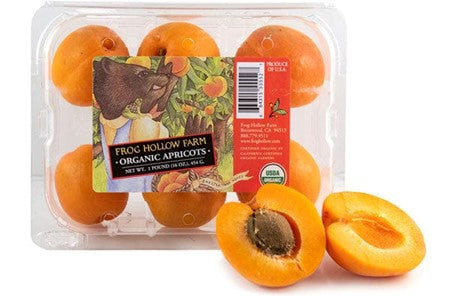
A very well-established Northern California farm is our source for fleshy and rich-tasting fresh apricots of various orange-flesh, free-stone varieties. Hand-picked for ripeness, Frog Hollow apricots are known to be succulent and sweet with just the right amount of tang. As a steward of organic and regenerative farming practices, Frog Hollow provides Melissa’s with USDA-Certified Organic fruits that are perfect for out-of-hand snacking and breakfast cereal, grazing boards, or stewed for game meats, canning or fruit leathers, and spring cobblers, pies, and ice cream!
Look for firm fruit; no soft spots or bruising. Do not wash apricots until ready to use. Store apricots at room temperature up to three days, then transfer to refrigeration, or wash, pit, and freeze or use in your favorite family recipe.
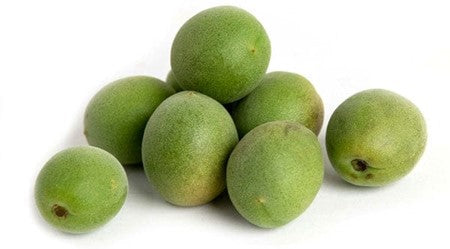
Native to Asia, this tiny fruit is fast becoming popular in the United States for pickling and small batch wines. Botanically from the apricot family, ume should not be consumed under-ripe or ‘green.’ Traditionally, it is fermented and stuffed in a rice ball or served plain as a condiment. It can also be used as a tangy ingredient in salads and side dishes.
When selecting fresh ume, look for firm fruit with no scarring, cuts, or bruises. Ume are stored best under refrigeration. Wash, pat dry, and gently remove any stems with a toothpick prior to preparation. Ume should be prepared within one week of purchase.

A member of the Cucurbitaceae or gourd family, melons are a relative of cucumbers, squashes and zucchini. Refreshing, sweet, and loaded with nutrients for spring and summer activities, melons vary in sizes, shapes, texture, flavors and colors. Versatile, they can be consumed sliced or cubed, pureed for cold soups, grilled and wrapped with salted meats, frozen for ices and sorbets and smoothies, or spiked for cocktails.
For the first of the season, we suggest sweet Gaya, the ‘dinosaur-looking’ melon with green streaks and smooth, cream-colored skin. Gaya has a sweet aroma, firm flesh, and a banana-cantaloupe flavor. It is tasty with tropical fruits.
Another tasty option—there are so many from which to choose—is an Orange-fleshed Honeydew, with smooth skin, a soft texture, and a refreshing honeydew melon flavor. The fun: when peeled, guests think it is cantaloupe until eaten!
As melons are mostly water, select those that seem heavy for their size, firm, and fragrant. Avoid cracks and soft spots or signs of mold on ‘netted’ skin. If the melon has a “belly button,” it was harvested properly and may need only a bit of time to reach peak ripeness. The belly button should yield to slight pressure. If you hear sloshing seeds, set it aside as it is well past its prime. Store uncut, unwashed melon at room temperature on a counter or in a large bowl for up to four days, then refrigerate and wash before preparation. Once cut, store the prepared melon in an airtight container for no more than 3 days for the best eating quality.
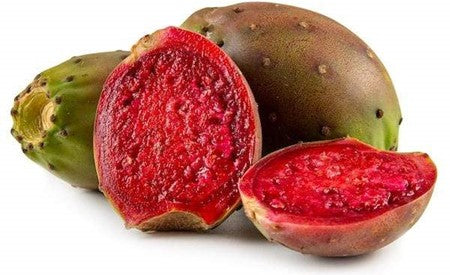
Considered a specialty fruit by many in the United States, red catus pears are popular in the Southwest and Latin American countries. Also known as opuntina, tuna, or prickly pear, they have a deep magenta-to-maroon juicy flesh with large edible dark seeds. The texture is reminiscent of firm kiwi with a melon aroma.
A source of soluble and insoluble fiber and vitamin C, Red Cactus Pears make eye-catching sauces, drinks, jelly, and additions to salads. Be wary of their naturally hairlike and often invisible needles! Carefully handle the pears by the stem and flat blossom end or with tongs. If you feel a thorn, try applying heavy tape to the area and quickly pulling away to extract the culprit.
Select pears that give to gentle pressure and have no signs of shriveling or softness. Ripen at room temperature then refrigerate, unwashed, up to one week. Scoop out the flesh and puree or slice; the skin is inedible. Strain flesh if you prefer to remove seeds. Flesh may be served room temperature, chilled, or frozen. Consume within 3-4 days of preparation or freeze up to three months.
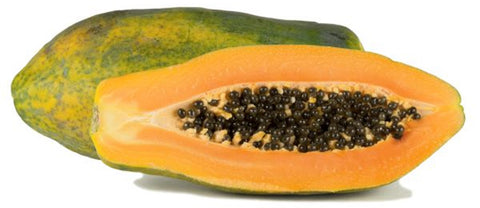
Red Caribbean Papaya has gorgeous vermillion-colored flesh with a bevy of dark black seeds. Its unique profile is that there is no off odor and no mealy flesh! Yes, a few slices of Red Caribbean Papaya will help relieve that tummy ache after a heavy meal, as the fruit contains papain, a natural digestive enzyme found in commercial meat tenderizers. The edible, dark black seeds have a peppery profile and contain the largest concentration of papain. Fun factoid: the seeds may also be crushed and used topically to soothe burns!
Available year-round, Red Caribbean Papaya’s firmer flesh and striking color allow it to be included in grilled tropical fruit skewers, medium diced as an addition to green salads or salsas and pico de gallo, or poached for a summer night dessert. As you can see it pairs well with other fruits, leafy Asian or spring and bitter greens, or pair with plant-based or animal proteins.
Brighten flavor with key lime, lemon, or Melissa’s pico de gallo powder. Select Red Caribbean papaya that yields to slight pressure, and has no signs of soft spots or spoilage. It may be left at room temperature to ripen on a counter or in a paper bag away from heat or sunlight. Once it yields to slight pressure, prepare to serve or refrigerate a few days more. This fruit does not freeze well for later use unless for smoothies.

Perhaps known as the lime for Florida’s summer fruit pie, but more often than not, it is best used to perk up ice cold beer! Also known as Mexican Limes, their rind is thinner and has seeds unlike the more common Persian Limes. Aromatic and juicy when rolled with slight pressure, Key Limes are often used in cocktails, to liven fresh fruits and salsas, accompany seafood, and of course, for Key Lime Pie!
Select limes with supple, shiny skin that yields to slight pressure. Avoid dry looking or shriveled fruit. Key limes may be stored at room temperature, which also makes them easier to squeeze.
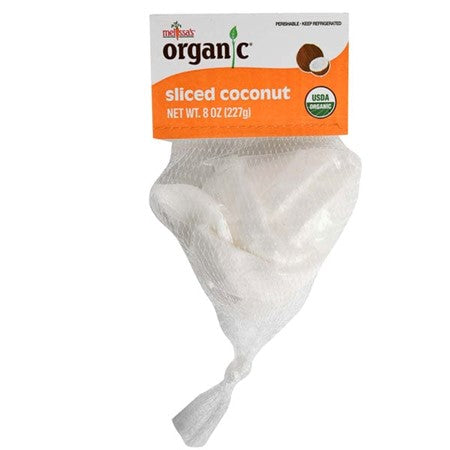
Melissa’s has done it again! We’ve taken the work out and increased the fun factor of consuming fresh produce with Organic Sliced Coconut. No longer do you need to crack a Brown Coconut, then pry out the flesh to snack or include in recipes. Found in the refrigerated section of the produce department, this product is ready to rinse and snack on with a squeeze of lime or drizzle of Costa Azul sauce. Or, include in most recipes by simply chopping into smaller chunks then pulse in a processor to add to puddings, rice, or quick muffins. Cut into shards for fruited salads or compotes. Go a step further by making your own fresh coconut milk for Thai and Indian dishes: small chop, simmer in a pot with water until soft, then puree and squeeze through cheesecloth. Voila! Use immediately or refrigerate up to one day. Unopened Organic Sliced Coconut may be kept under refrigeration up to 14 days.
All Melissa’s Organic Produce is Certified Organic by USDA guidelines.
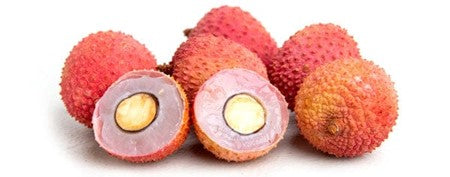
Originating from China over two millennia ago, this grape textured fruit is juicy with a wonderfully floral aroma. An interactive fruit, simply break and peel back the thin rose- or light green-colored skin to expose the flesh, then pinch the peel to push the flesh and pit into your mouth. The tropical flavor and intense fragrance make for a truly refreshing experience. Discard the inedible pit.
Lychee is often used as a cocktail ingredient or in cold Asian jelled desserts. But why not try them as sorbet, pitted and pulsed with a few pinches of minced fresh chili peppers, or poached in light simple syrup and fresh ginger, then served over ice cream or coconut rice? Go spicy and serve in a fresh salsa or add to curry just before serving. Steer clear of wrinkled or split fruit.
Fresh lychee should be selected heavy and plump for their size as they contain lots of juice. Keep refrigerated in a plastic bag with paper towel to wick moisture. If you have left over fresh lychee, peel and pit, then freeze up to three months. Freezing will yield softer, less fragrant fruit, but will be just as tasty. This year, the crop is expected to harvest the end of May.
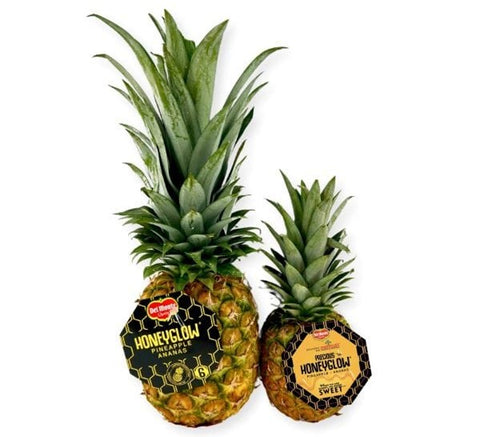
Slowly ripened on the stem in Costa Rica, Melissa’s mini Precious Honeyglow® Pineapple is harvested at the peak of sweetness under sustainably grown practices. No need to check for ripeness; all Honeyglow® Pineapples are ripe and ready to eat! Our mini Precious Honeyglow® is great for small households and special occasions. Add it to a tropical grazing board, of scoop out the flesh and use the shell as a vessel for sweet and savory dishes.
Pineapple is a member of the bromeliad family and contains natural digestive enzymes. This is why pineapple must be cooked prior to adding to gelatines or reheating meats. Indigenous to Central and South America, pineapples were discovered by Columbus and his crew in 1493, and called this new fruit ‘piñas’, as they resembled pinecones.
Select firm fruit with no soft spots or withered crown. Refrigerate up to five days, then peel, cut, and serve, or freeze the larger Honeyglow® in single layer then transfer to sealable freezer bags and use in smoothies and margaritas, or for sorbet and ices. Make a fabulous pineapple vodka by adding washed, peeled pineapple cut into wedges and placed in a 2-quart glass container. Add enough plain vodka to fully cover fruit; about one liter. Cover and set aside at room temperature to infuse vodka; about two weeks. Strain and enjoy; store under refrigeration and consume within two weeks.

Condiments are a necessity in every home. Just peek into anyone’s fridge or pantry to discover the myriad of flavors, textures, spices and cultures fused into America’s food. Costa Azul is a Sriracha-style squeezable sauce with tang and spice that amps up any meal or nosh. The secret to this sauce is red jalapeños, left on the vine to ripen, sweeten, and develop heat. Drizzle on a compote of avocado, coconut and mango, or over eggs and potato (the new ketchup), finish pho or noodle dishes, fries, grilled veggies, barbecued proteins, and so much more! Costa Azul is great to season snacks, too, such as popcorn, rice crackers, mixed nuts, chips, etc.
Costa Azul should be refrigerated once opened.

Spring season is the harbinger of color and freshness. Why not amp up the appearance of some dishes by including edible flowers? Varying in size and a bevy of colors, Melissa’s Edible Flowers pack contains 40-50 different colorful flowers to garnish drinks, add to salads and entrées, or decorate desserts and wedding cakes. Care and thought should be taken when planning to incorporate edible flowers as some varieties may cause reaction to diners with impacted health. For example, the petite borage flower with its cucumber flavor should not be served to pregnant or lactating women, while others are more universally accepted. Carnations have a spicy, clove-like taste perfect for decorating cakes, smoked dishes or cocktails. Cornflowers are fragrant, sweet and spicy. Bright marigolds add a citrus profile tasty in a salad or drink, while nasturtiums with their watercress flavor are perfect with cream cheese, tomato, or butters. Pansies and violas have great universal application for just about any dish as they are reminiscent of lettuce and can be crystallized or sugared for longer décor life.
Edible flowers contain no pesticides and must be refrigerated until ready to serve. Melissa’s Edible Flowers assortment will vary depending on season.


Leave a comment